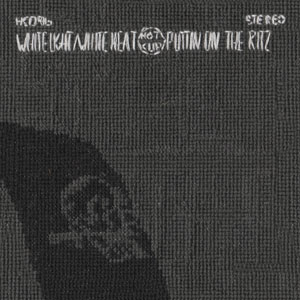Home » Jazz Articles » Album Review » Puttin On The Ritz: White Light White Heat
Puttin On The Ritz: White Light White Heat
But the defining moments on this recreation come from vocalist, Rubin whose searing vocals are a cross between a primordial cry and the wail of a dying man on "White Light/White Heat," that propulsive track about the effects of amphetamines. "The Gift" features the laconic narration of a seemingly abstract short story, while the contrapuntal music comes at acute angles to the vocal, with Moppa Elliott's slamming bass lines, Nate Wooley's wailing trumpet, Sam Kulik's smearing trombone, and a wild romp on tenor saxophone by Jon Irabagon. In fact the saxophonist is the chief instigator, playing a perfect foil to Rubin's vocals that swing from swaggering and bold to tentative and nervy. On "Lady Godiva's Operation," Rubin sings like blue murder, almost as if the surgery on Godiva takes a turn south. Once again, Irabagon, together with Wooley, instigate Rubin into a kind of hypnotic, self-destructive final note of the song. And so on, until the seemingly interminable verses of "Sister Ray," who brandishes her sexuality like a trashy yet honest flag of existentialism, which flow from Rubin with Joyce-ian stream-of-consciousness.
When the Velvet Underground's album was first released in the late 1960s, the music reflected a deep rift between Warhol's generation and the older establishment. Velvet Underground and groups like it poured vomit-like scorn on a generation that exercised a sort of control on its freewheeling bohemianism, smacking of Haight-Ashbury's hippie culture. In today's context, the subliminal suggestions of the album are a lot more sinister, coming as it does during a period of abject denial of the collapse of the capitalist excess, be it in terms of sexuality, discrimination and racism, homophobia and ultra-conservatism.
In a well-produced dead ringer for the original album package, Hot Cup Records has once more come up with a winning combination of design and musical creativity that defies convention and scores with a wonderful combination of seriousness and black humor.
Track Listing
White Light White Heat; The Gift; Lady Godiva's Operation; Here She Comes Now; I Heard Her Call My Name; Sister Ray.
Personnel
BJ Rubin: vocals; Kevin Shea: percussion, vocals; Matthew "Moppa" Elliott: bass, vocals; Jon Irabagon: saxophone; Nate Wooley: trumpet; Sam Kulik: trombone, bass trombone; Matt Mottel: Turkish organ.
Album information
Title: White Light White Heat | Year Released: 2010 | Record Label: Hot Cup Records
< Previous
It's About Time
Comments
Tags
For the Love of Jazz
 All About Jazz has been a pillar of jazz since 1995, championing it as an art form and, more importantly, supporting the musicians who create it. Our enduring commitment has made "AAJ" one of the most culturally important websites of its kind, read by hundreds of thousands of fans, musicians and industry figures every month.
All About Jazz has been a pillar of jazz since 1995, championing it as an art form and, more importantly, supporting the musicians who create it. Our enduring commitment has made "AAJ" one of the most culturally important websites of its kind, read by hundreds of thousands of fans, musicians and industry figures every month.



















